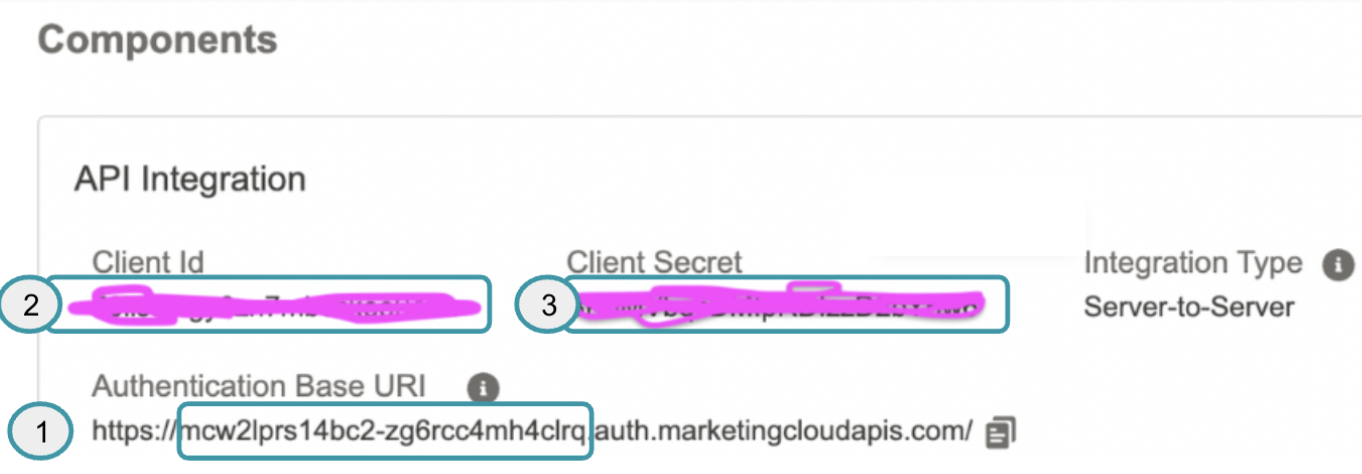Marketing Cloud Data Extensions
Enhance your Salesforce Marketing Cloud (SFMC) campaigns with powerful customer data from your data warehouse.
In this guide, we’ll walk you through syncing customer data from your data warehouse into Salesforce Marketing Cloud (SFMC) to supercharge your marketing efforts. Let's get started!
Supported Object
GrowthLoop enables syncing to the Data Extension object.
Object | Description | Sync Modes | Field Mappings (Required) | Field Mappings (Optional) |
|---|---|---|---|---|
| A table that stores customer details for campaigns—keep it accurate with regular syncs for effective personalization | Insert Only (adds new records) Update Only (modifies existing record attributes) Upsert (combines insert and update) |
AND
|
|
Prerequisites
-
Make sure you've set up SFMC user permissions, created an API integration, and configured data extension permissions. If you haven’t done these yet, you can follow our guide here to get everything sorted.
-
Have your Subdomain, Client ID, and Client Secret ready. You can find these details in SFMC where you set up the API integration.

Add and configure destination
- Log in to GrowthLoop and click Destinations on the left sidebar.
- Click New Destination in the top right corner.
- Search for "Marketing Cloud" and click Add Marketing Cloud.
- Enter the required information in the modal, then click Create.
- Destination Name: This is how the destination will be named and referred to in the app going forward.
- Sync Frequency: This indicates how frequently audiences will be synced to the destination.
- Subdomain: This is part of the Authentication Base URI used for authentication requests. It's the section between https:// and .auth.marketingcloudapis.com/.
- Client ID: This is your identifier to access the API. You can find it in SFMC where you set up the API integration.
- Client Secret: This is your secret string to securely authenticate your requests. You can find it in SFMC where you set up the API integration.
Create and configure sync
- Navigate to the Syncs tab on the left sidebar and click Create Sync in the top right corner.
- Set up your Sync with the following details:
- Sync Name: A clear, friendly name for your sync.
- Sync Frequency: How often data should sync to the destination.
- Update Rule: The default method for syncing data to the destination. GrowthLoop supports
Insert Only(adds new records),Update Only(modifies existing record attributes), andUpsert(combines insert and update) - Dataset / Table: The table containing your user data.
- Dataset Unique Field: The column with unique values for each user in the table.
- Match Field: The column used to identify users in your source table for the destination system. Please select a field that is a unique identifier for each record in the table (e.g,
User ID,Email, etc.) - Connection: Choose the destination for syncing data. Select Marketing Cloud.
- Object Type: Choose the specific Data Extension to sync in the drop-down.
- Match Field: The column used to match and identify users in the destination system based on your source data. Please select
SubscriberKey
- After selecting/inserting the required fields, click Save Sync.
- Next, add your desired field mappings. SFMC requires both Email and Subscriber Key to be mapped.
- Under Source, open the drop-down and select the field containing email addresses.
- In the Destination section, choose Email Address from the drop-down menu, unless already selected.
- Click Add Mapping to add another Source > Destination row.
- In the Source section, select the field containing a unique identifier for each record (e.g.,
User ID). - Then under Destination, choose SubscriberKey from the drop-down menu, unless already selected.
- Map any other fields you want to insert or update in the Data Extension.
- After mapping all the fields, clicking Update Sync will prompt you with the following two options:
- Updates Only: We recommend you go with the this option, especially if you’re setting up the sync for the first time.
- Back-fill: This option is when you are updating an existing Sync with newly mapped fields and you’d like all your already synced events to have those fields backfilled for them. This operation can be very expensive and time consuming on your underlying Data Warehouse, so please choose that option if you’re absolutely sure.
- Once complete, return to your sync and enable it by clicking the toggle at the top of the page
- To confirm that your sync has been successfully sent to SFMC, navigate to the Subscribers section and select the Data Extension to view the updated records and attributes.

SuccessYou have successfully created a sync to a
Data Extensionin SFMC!
Note:If you experience any issues when connecting to or creating syncs to SFMC Data Extensions, please reach out to us at [email protected], and we’ll be in touch shortly to help resolve the matter!
Updated 8 months ago
Want to discover more ways to combine GrowthLoop and SFMC? Click below for a full list of use cases!
